Less common species we worked with on the turtle farm
We had limited opportunities to work with small numbers of other North American turtle species at the Concordia Turtle Farm. Usually we were only able to induce a few of each species each year so the methods we used evolved over time and the numbers of animals we induced of any one species were low except for the spiny softshells.
From 2008-2019 we injected over a hundred turtles of various other species besides RES (razor back musks, snapping turtles, and a variety of cooters, sliders, painted and map turtles) with variable outcomes.

Because of the limitations of low numbers there were few observations of value. The table above deals with the yellow bellied and cumberland sliders. These species seemed as responsive as RES to 1.5 mg/kg of Lutalyse. The table below details the results with 21 snapping turtles. Note that the eight turtles that received an alpha-2 agonist laid all their eggs.
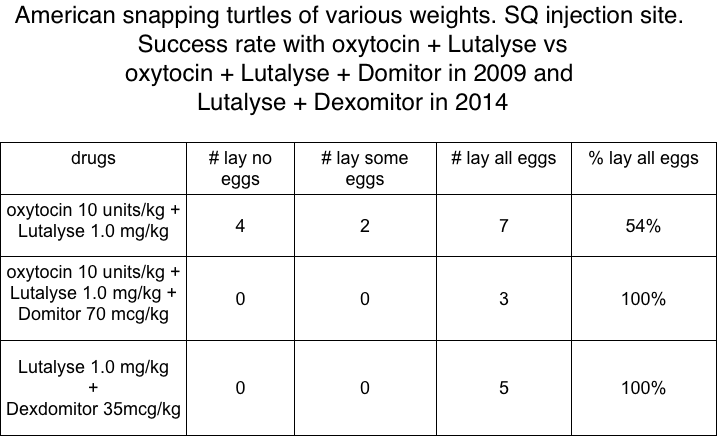
Sabine map turtles (Graptemys sabinensis), as shown below, appeared around the farm during rain storms. The barriers around the ponds were porous and these small turtles could slip through and wander freely.
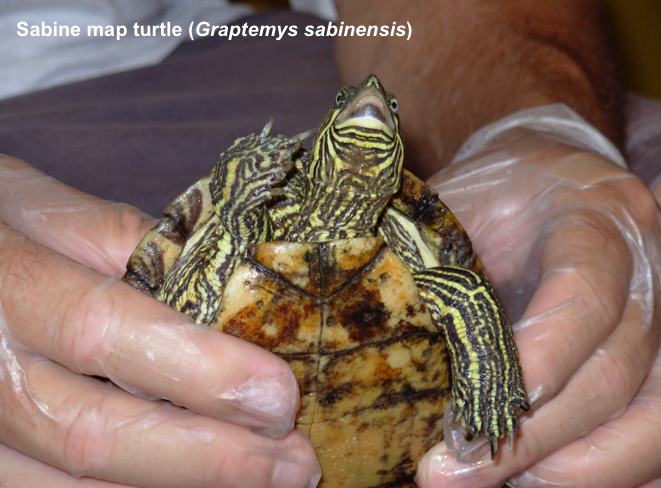
Because of their small size sabine maps were difficult to palpate and had to be x-rayed to confirm the number of eggs.
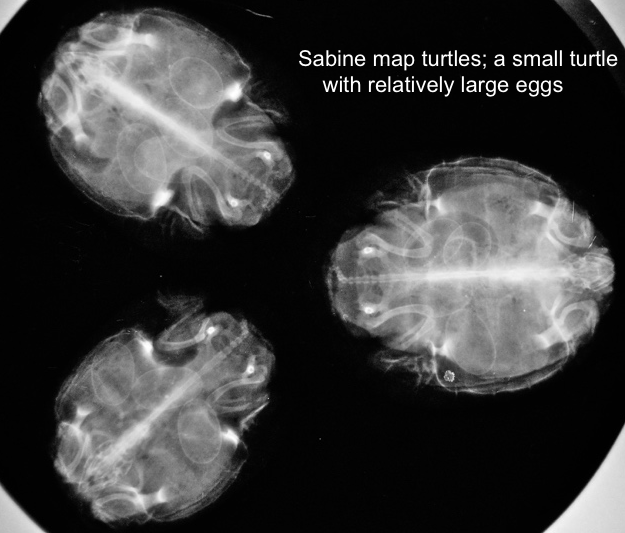
As you can see from the table below the sabine maps responded well to Lutalyse used alone. When we added the alpha-2 agonist xylazine the success rate dropped.
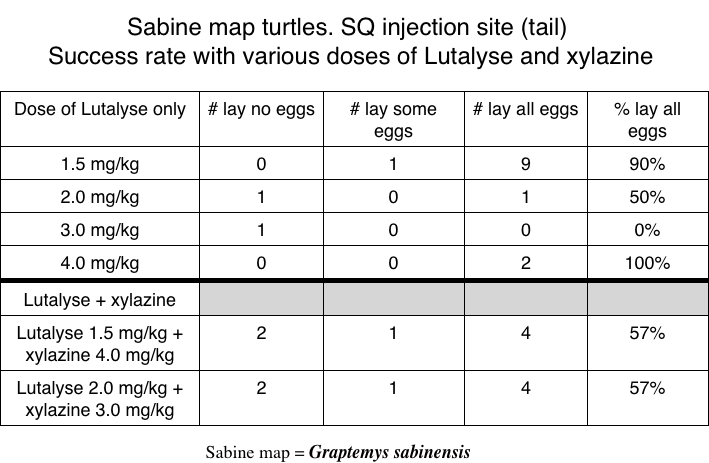
As you can see from the table below, adding xylazine also reduced the success rate with healthy RES from 94% when using Lutalyse alone.
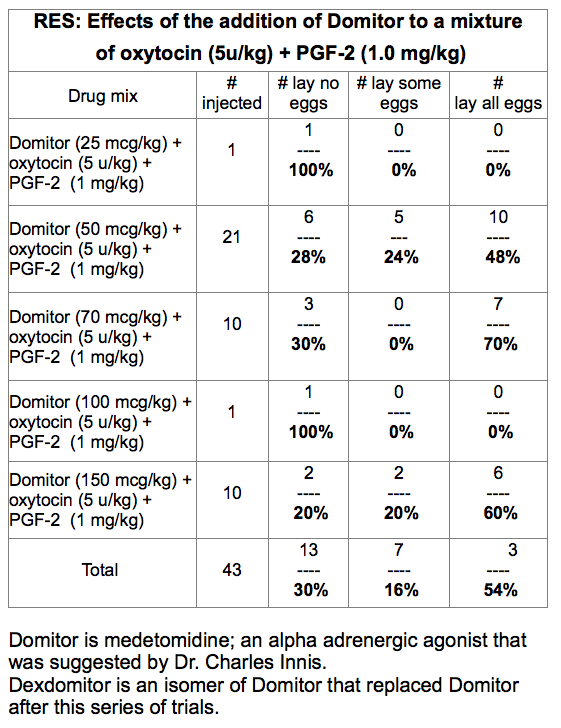
We rarely got to work with map turtles. These animals had been on the farm in a single large pond for decades and they had interbred to the point where the species could not be identified accurately anymore.
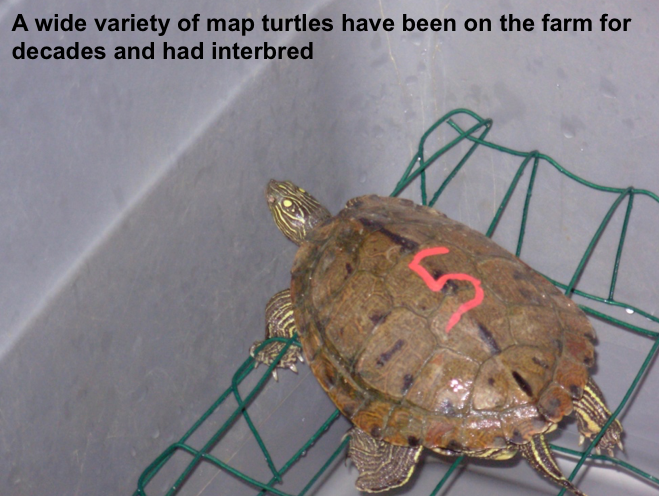
The table below demonstrates that map turtles responded well to Lutalyse alone.

Over the years we sporadically had a chance to induce cooters of many types.
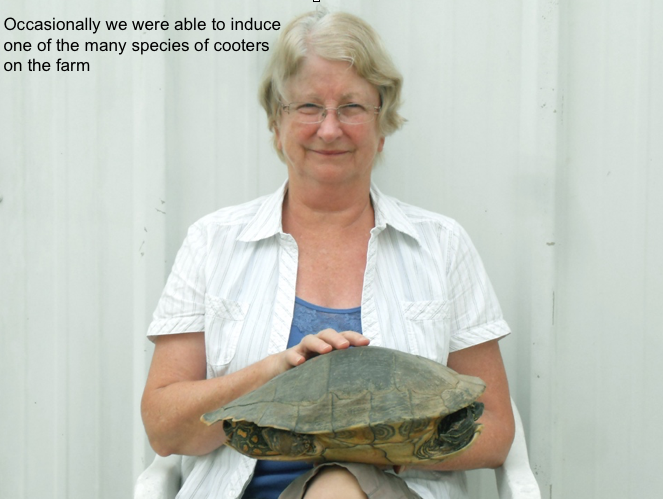
As you can see from the table below, we used a wide variety of methods when we induced cooters because we’d trial whatever we were using on the RES or SSS at the time. It’s difficult to draw a conclusion from this collection of methods and low numbers of turtles.
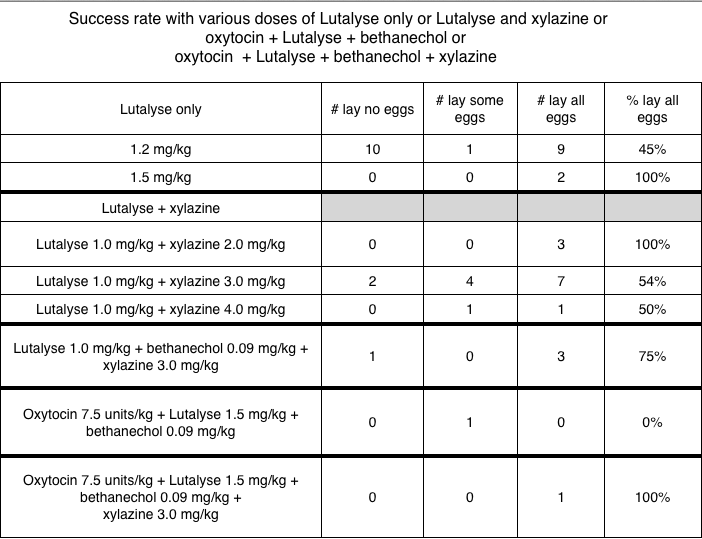
It’s a similar story with a mix of painted turtles of various species.
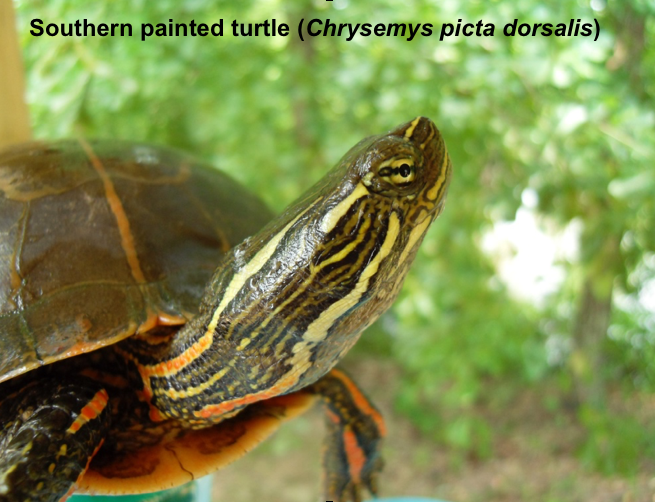
The table below shows that Lutalyse, 1.0-2.0 mg/kg + oxytocin was the most effective induction agent. It was more successful than oxytocin alone which had a 65% success rate with wild eastern painted turtles that we induced in the 1970s (Feldman 2007).

All we could conclude from these results was that different species require different drugs and/or doses for an effective induction. This makes a lot of sense when you consider how long turtles have had to evolve different functions for their various reproductive agents.
From 2010-2017 we got access to a pond with several hundred mature spiny softshell turtles (SSS). This species nests after the RES are finished so we decided to begin working with spiny softshells, a species that was very different from RES, and see what drugs worked best for them in a controlled fashion.
The first problem we had to solve was how to judge the number of eggs the turtles were holding.
